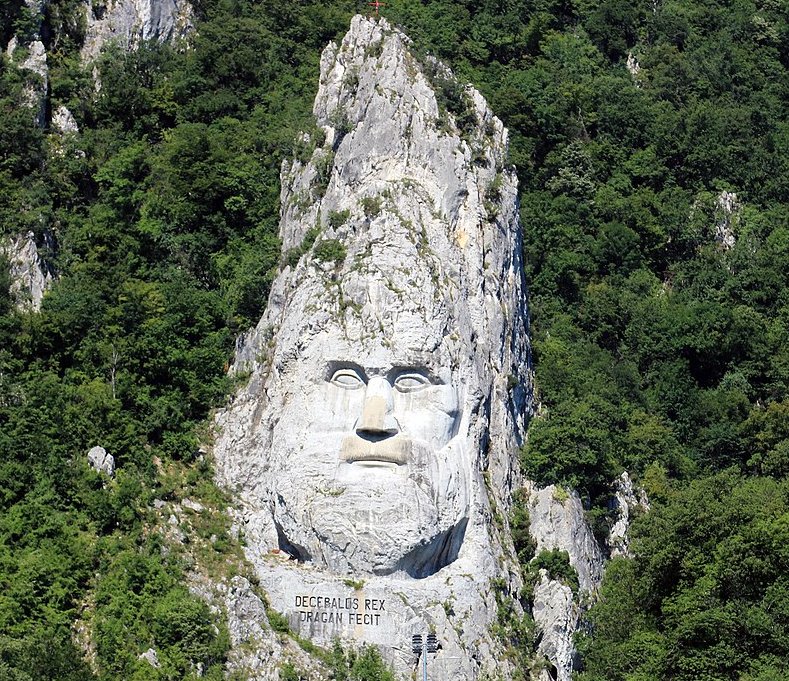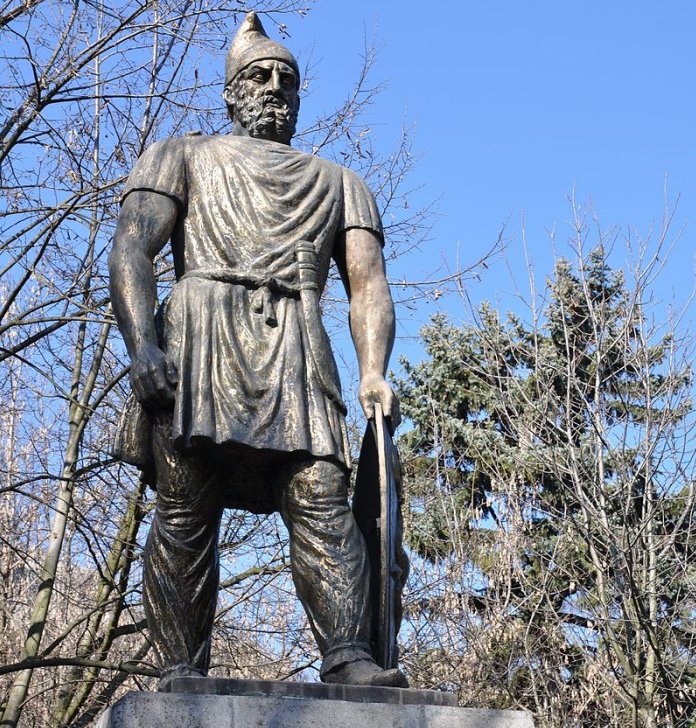Decebalus – The Brave One’ – Last Mighty King Of Dacian People
A. Sutherland - AncientPages.com - Described in numerous literary works, movies, public monuments, and other memorials, Decebalus is considered a national hero in Romania.
At the beginning of the third century, 150 years after the affirmation of Decebalus, Dio Cassius (164-c.235): a Roman senator of Greek descent, historian, and author of 'Roman History' wrote about the mighty king Decebalus as follows:
"He was very skilled in the war and skillful work, knowing how to choose the occasion to attack the enemy and withdraw at a time. Abil in traps was valiant in battle, to use skillfully knowing a victory and finally escaping a defeat for the things he has long been a fierce adversary of the Romans ".
Decebalus (Decebal) - 'the brave one' - was the last king of Dacians, a people who lived in the territory known presently as Romania.
He was also one of the mightiest rulers of this ancient kingdom. He ruled the Dacians 87-106, but the first year of his reign was especially difficult because the Dacian Kingdom crumbled into four or perhaps five principalities and was weak.
After reuniting fragmented Dacian tribes into one nation, he led them in three wars against the Roman Empire and its two emperors, Domitian and Trajan.
He immediately organized an army and attacked the Roman province of Moesia (southeastern Balkans), killing its governor, Oppius Sabinus.
The rock sculpture of Decebalus at the Iron Gates. Image credit: Sadko (made the image in the immediate vicinity of the sculpture) - CC BY-SA 4.0
'During his reign, an accelerated process of the state centralization occurred in the face of the imminent Roman danger. For two decades, the confrontation with the Dacian state constituted the major problem of the Roman foreign policy.'
He fought victoriously against Domitian's general, Cornelius Fuscus. Still, new dangers came, and in 89, Decebalus was eventually defeated and forced to sign a peace treaty that made the Dacian kingdom a client of Rome. According to these terms, the Dacians receive Roman money and technical support in exchange for recognition of Roman overlordship.
During the next 12 years of peace, Decebalus consolidated power and rule.
Decebal (Decebalus) (ruled 87-106) was the last king of Dacia. The Romans defeated the Dacians at Topae, set fire to several towns, and moved towards Sarmizegetusa, the kingdom's capital. The Romans laid siege to the city and cut Sarmizegetusa's water supply.
After almost three years of preparations at the southern boundaries of Dacia, at the beginning of the year 101 in Moesia Superior, Emperor Traian concentrated 13-14 legions and many auxiliary units (circa 150 000 soldiers) to conquer Decebal's reign.
Statue of Decebalus in Deva, Romania. Image credit: Saturnian - CC BY-SA 3.0
In 101, Trajan led an invasion of Dacia, and thus, the First Dacian War began. The capital of Sarmizegethusa (in modern Romania) was captured. In 102, Decebalus was forced to accept Roman occupation garrisons.
In 105, the mighty Decebalus was once powerful enough to defeat the occupation forces and invade Moesia. It was the Second Dacian War.
The Dacians, led by Decebal, resisted heroically. On the other hand, Roman Emperor, Trajan, threw all the Empire's resources into the fight to be victorious. Dacia's gold was essential, but he first wanted to eliminate the threat from the Dacians and their allies at the eastern border.
After Trajan seized Sarmizegethusa a second time in 106 and the Dacians' fortress of the Orastie's Mountains fell, some defenders, including Decebal, managed to leave the city, trying to continue resistance against the Romans within the country. Being chased by the Romanian cavalry, Decebal commits suicide because death is better than falling alive into his enemies' hands.
Dacia capitulated and became a Roman province.
There is a mighty 40-meter-tall bearded stone face overlooking the Danube River in Romania.
It is the statue of the Dacian king Decebalus. From 1994 to 2004, it took ten years for twelve sculptors to finish it. The figure is the tallest rock sculpture in Europe. It is located on the Danube's rocky bank near Orsova, Romania.
Today, 2000 years later, the great Dacian king keeps watch on the borders of those lands he defended.
Written by – A. Sutherland - AncientPages.com Senior Staff Writer
Updated on January 25, 2024
Copyright © AncientPages.com All rights reserved. This material may not be published, broadcast, rewritten or redistributed in whole or part without the express written permission of AncientPages.com
Expand for referencesReferences:
Dando-Collins S. Legions of Rome: The definitive history of every Roman legion
M. Dumitrana, 'Romanian Cultural Identity and Education for Civil Society'
More From Ancient Pages
-
 Mystery Of Biblical Noah’s Strange Connection With Red-Skinned Giants And The Watchers – Not-Of-This-World Emergence – Part 1
Ancient Mysteries | Jan 25, 2021
Mystery Of Biblical Noah’s Strange Connection With Red-Skinned Giants And The Watchers – Not-Of-This-World Emergence – Part 1
Ancient Mysteries | Jan 25, 2021 -
 Tokoloshe: Demonic Creature That Feeds On Spiritual Energy Of Its Victims
Featured Stories | Sep 9, 2020
Tokoloshe: Demonic Creature That Feeds On Spiritual Energy Of Its Victims
Featured Stories | Sep 9, 2020 -
 Anomalous Ancient Structures In The South West Pacific Remain Unexplained
Ancient Mysteries | May 19, 2018
Anomalous Ancient Structures In The South West Pacific Remain Unexplained
Ancient Mysteries | May 19, 2018 -
 4000-Year-Old Egyptian Leather Manuscript Forgotten For More Than 70 Years – Found
News | Sep 14, 2015
4000-Year-Old Egyptian Leather Manuscript Forgotten For More Than 70 Years – Found
News | Sep 14, 2015 -
 Rock Stars: How A Group Of Scientists In South Africa Rescued A Rare 500 Kg Chunk Of Human History
Featured Stories | Oct 20, 2022
Rock Stars: How A Group Of Scientists In South Africa Rescued A Rare 500 Kg Chunk Of Human History
Featured Stories | Oct 20, 2022 -
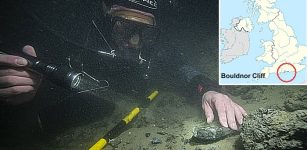 Race Against Time: Crucial Expedition To Delve Into Bouldnor Cliff, Europe’s Mesolithic Underwater Stone Age Site
Underwater Discoveries | Apr 28, 2024
Race Against Time: Crucial Expedition To Delve Into Bouldnor Cliff, Europe’s Mesolithic Underwater Stone Age Site
Underwater Discoveries | Apr 28, 2024 -
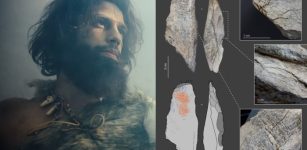 Little Known Neanderthal Technology Examined – Turning Bones Into Tools
Archaeology | Jun 19, 2023
Little Known Neanderthal Technology Examined – Turning Bones Into Tools
Archaeology | Jun 19, 2023 -
 Unas (Unis): First Pharaoh Who Decorated His Burial Chamber With Pyramid Texts
Featured Stories | Jun 3, 2021
Unas (Unis): First Pharaoh Who Decorated His Burial Chamber With Pyramid Texts
Featured Stories | Jun 3, 2021 -
 Aillén Mac Midgna: Evil Goblin Who Terrorized Sacred Hill Of Tara
Celtic Mythology | Mar 28, 2024
Aillén Mac Midgna: Evil Goblin Who Terrorized Sacred Hill Of Tara
Celtic Mythology | Mar 28, 2024 -
 Controversial Artifact Fuente Magna Could Re-Write Ancient History – America’s Mysterious Rosetta Stone
Artifacts | Oct 18, 2014
Controversial Artifact Fuente Magna Could Re-Write Ancient History – America’s Mysterious Rosetta Stone
Artifacts | Oct 18, 2014 -
 Melipona Beecheii – Sacred Ancient Maya Beekeeping Site Discovered In Quintana Roo, Mexico
Archaeology | May 28, 2024
Melipona Beecheii – Sacred Ancient Maya Beekeeping Site Discovered In Quintana Roo, Mexico
Archaeology | May 28, 2024 -
 ‘Throughout All Days And Nights, Forever’: Could An 11th-Century Contract Show Same-Sex Marriage In Medieval Spain?
Featured Stories | Aug 23, 2024
‘Throughout All Days And Nights, Forever’: Could An 11th-Century Contract Show Same-Sex Marriage In Medieval Spain?
Featured Stories | Aug 23, 2024 -
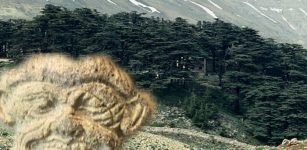 Gilgamesh And Enkidu Undertake A Dangerous Mission To Hunt Forest Giant Humbaba
Featured Stories | Jun 1, 2017
Gilgamesh And Enkidu Undertake A Dangerous Mission To Hunt Forest Giant Humbaba
Featured Stories | Jun 1, 2017 -
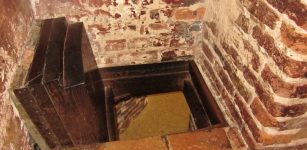 Nicholas Owen ‘Little John’ Who Paid Highest Price For His Ingenious, Camouflaged Places To Hide
Featured Stories | Dec 5, 2017
Nicholas Owen ‘Little John’ Who Paid Highest Price For His Ingenious, Camouflaged Places To Hide
Featured Stories | Dec 5, 2017 -
 Denisovan Family Tree: New Branches Revealed In Ancient DNA
Archaeology | Apr 12, 2019
Denisovan Family Tree: New Branches Revealed In Ancient DNA
Archaeology | Apr 12, 2019 -
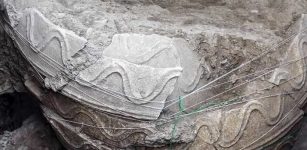 Bizarre Parthian Tomb Sheds Light On Ancient Life In Isfahan, Central Iran
Archaeology | Jun 25, 2020
Bizarre Parthian Tomb Sheds Light On Ancient Life In Isfahan, Central Iran
Archaeology | Jun 25, 2020 -
 New Egyptian Dinosaur Helps To Reconstruct Evolution Of Dinosaurs In Africa
Archaeology | Jan 30, 2018
New Egyptian Dinosaur Helps To Reconstruct Evolution Of Dinosaurs In Africa
Archaeology | Jan 30, 2018 -
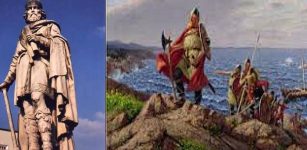 On This Day In History: Battle of Englefield Was Fought – On Dec 31, 870
News | Dec 31, 2016
On This Day In History: Battle of Englefield Was Fought – On Dec 31, 870
News | Dec 31, 2016 -
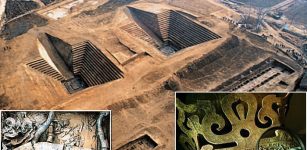 Mysterious Lost Civilization Of Chu And Its Powerful Kingdom
Civilizations | Nov 29, 2018
Mysterious Lost Civilization Of Chu And Its Powerful Kingdom
Civilizations | Nov 29, 2018 -
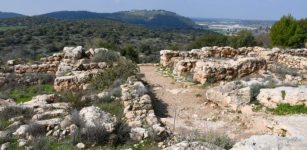 Story Of David And Goliath Linked To Horvat Qeiyafa In The Valley Of Elah, Israel
Archaeology | Feb 22, 2022
Story Of David And Goliath Linked To Horvat Qeiyafa In The Valley Of Elah, Israel
Archaeology | Feb 22, 2022


